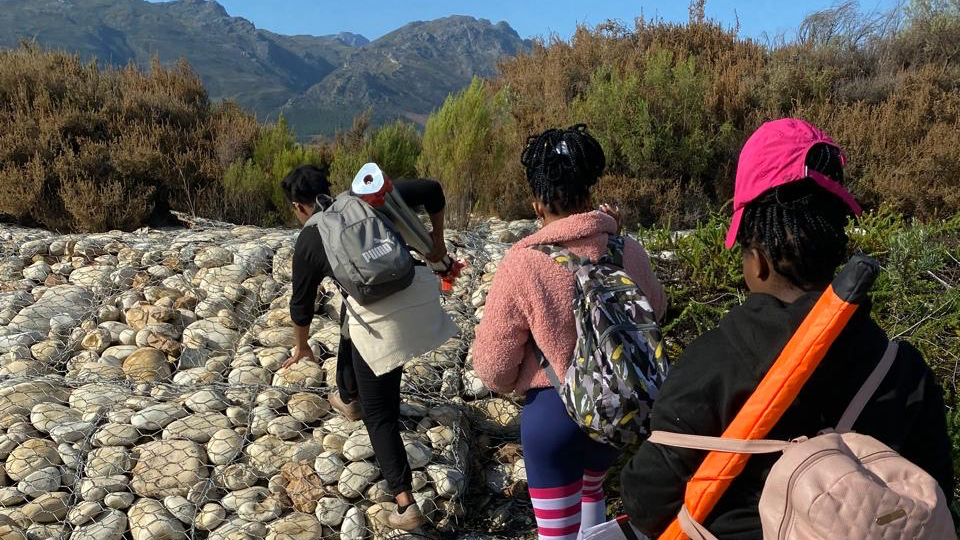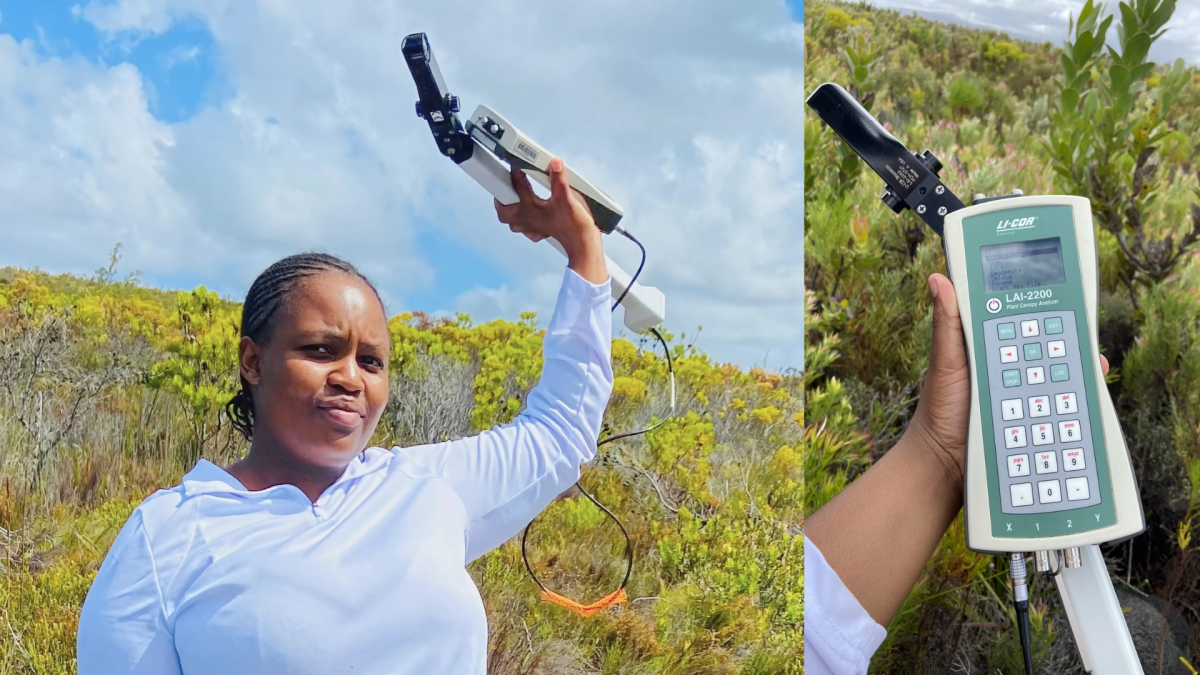Researching the effects of groundwater-dependent invasive species in South Africa
Posted in : A View From The Field on 7 April 2025

About 10 million hectares of land inSouth Africa have been invaded by alien plants—primarily the Prosopis, Acacia, and Eucalyptus species—that are dependent on groundwater, with some consuming up to 50 liters per day. In a water-stressed country, these plants pose risks to groundwater-dependent ecosystem services and groundwater conservation.
Mmasechaba Lebogang Moropane, 26, wants to help. She is using satellite-based techniques in Google Earth Engine to detect and map the extent of invasive species that rely on groundwater in the Heuningnes Catchment in the Western Cape province.
A graduate student at the University of the Western Cape, Moropane believes that her research findings will be crucial to share with environmental and water resources managers to guide them in decision making about invasive species-clearing efforts, groundwater conservation, and protection of native species. She intends to ask the SADC-GMI to connect her with water resources managers when her research is completed.
“To better adapt to climate change and drier conditions,” Moropane says, “it’s every important to know how much space is being occupied by these species and how much groundwater they are extracting. Because invasive species adapt better to drier conditions than native species, projections indicate that we will end up losing our ecosystems and ecosystem services. Paying attention to these species is very important to help achieve Sustainable Development Goal 15, target 8, which aims to prevent invasive species on land and in water ecosystems.”
Moropane’s research, tuition, room, and board is being funded by a nearly US$11,000 scholarship from SADC-GMI’s Young Professionals program, which is supported by CIWA. Moropane believes that her research is unique both in South Africa and globally. She said she learned from her literature review that while there is extensive research on groundwater-dependent ecosystems and on invasive species, there are few studies that link them to show the impact of these plants on ecosystems and groundwater levels.
Ten million hectares in South Africa are invaded by alien plants like Prosopis, Acacia, and Eucalyptus, consuming up to 50 liters of groundwater daily.
A river in retreat
Moropane grew up in Mokwete, a small farming community in Limpopo province in northern South Africa. Her father grows vegetables and raises cows and goats on a half-hectare of land. He used to bring his roughly 20 cows to the Ngwaritsi River behind their house to drink. Back then, the river flowed year-round and overflowed during rainy seasons.
Now, she says, “It’s a different story. When I was in grade six or seven, all of a sudden the water started declining. It dried up completely some years. Now we have to give water to the few remaining cows from buckets at home.
Most of the cows died from hunger, stomach diseases, and walking long distances in rocky areas to find alternative water sources.”
During her youth, many village residents believed witchcraft was responsible for the decline in rainfall and the drying river. When Moropane was in grade 10, her geography lessons taught her about rainfall. She realized that it was not witchcraft that dried up the river.
“That’s when I got inspired to learn more about rainfall and how water moves through the environment, and I wanted to pursue a geography-related degree,” she says. Now, she adds, “I’m very passionate about being an environmental hydrologist.”
Improving the environment for the next generation

“I’m very grateful to SADC for providing me with the scholarship,” Moropane says.
“My parents couldn’t help me with this journey. I would have had to drop out.”
Moropane has excelled in school. As an undergraduate, she received the Golden Key International Society award and the Dean’s merit award three times and graduated summa cum laude from the University of the Western Cape, with a degree in environmental and water sciences.
“Her performance has been exceptional,” says Timothy Dube, associate professor of earth sciences and director of the university’s Institute of Water Studies. “She is extremely curious, hardworking, disciplined, creative, and works well with others.”
Moropane plans to attain her PhD and ultimately work in sectors that prioritize environmental health and water conservation. And she wants to bring her knowledge back home to teach people about the need to change their practices, for example, illegal dumping into the river. She will also be a role model for other girls looking to enter this male-dominated field.
With a doctorate degree, she says, “When I talk, they will listen, because they have strong respect for people with higher education. The opportunity to get them to listen can have a huge impact on my community and the environment.
When I share my knowledge with them, I feel it will make them see things in a different way. And they will start being environmentally conscious.”
She adds, “What will fulfill me is contributing to environmental health and conservation of water resources. I want to contribute to making the lives of present and future generations easier by taking actions that protect and conserve the environment and its limited resources.”


